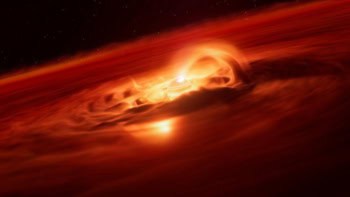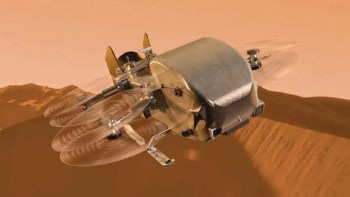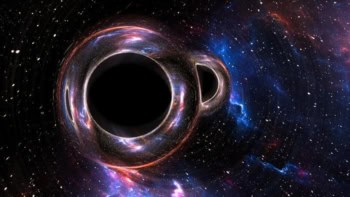
The supernova first observed by Tycho Brahe in 1572 helped change our conception of the universe, by undermining the Aristotelian idea of the immutability of the heavens. Now, a new study of this massive explosion could help shed more light on the nature of the cosmos.
Research carried out by astronomers in Europe and Japan on SN1572, as the event is known, should help us understand exactly how supernovae occur and might also lead to a better understanding of how the universe has been expanding. By analysing “echoes” of light from SN1572 reflected off a nearby dust cloud, Oliver Krause of the Max Planck Institute for Astronomy in Heidelberg, Germany, and colleagues have proved that it is a so-called type-Ia supernova (Nature 456 617).
Supernovae are the explosions of aging stars, that produce enough light to outshine entire galaxies for a few weeks. They are important scientifically because they seed the universe with heavy elements, providing the raw material for successive generations of new stars. The very well defined luminosity of type-Ia supernova also makes them ideal “standard candles”, allowing astronomers, by comparing their observed and actual luminosities, to gauge distances within the universe and thereby chart the cosmic rate of expansion.
Supernovae occur throughout the universe continually, but those close enough to be of use to researchers happen only rarely. Indeed, in the last 1000 years only six supernovae have been observed taking place in the Milky Way. Unfortunately, the historical observations of these events are not of a high enough quality to reveal precisely what happens during a supernova. Astronomers can study the material left over, known as the remnant, but this cannot provide detailed information on the explosion itself.
Scattered from dust
To get round this problem, Krause and colleagues have instead studied light from SN1572 that has been scattered by a nearby dust cloud. This has been made possible because the cloud, of a suitably high density, is located several hundred light years from the site of the supernova, thereby allowing observation of this light “echo” on the Earth today.
Using the 8.2 m Subaru telescope in Hawaii, Krause’s team found a tell-tale patch of brightness in the night sky close to the supernova remnant that was moving away from the remnant. This, they say, is the echo formed as the flash of light produced by the explosion moves through the cloud.
Echoes of runaway fusion
The discovery of light echoes from SN1572 and another ancient supernova was announced by Armin Rest of Harvard University and colleagues earlier this year. What Krause’s team has done is to use echoes to establish the nature of Brahe’s supernova. Indirect evidence, such as radio and X-ray observations of the remnant, had suggested that SN1572 was a type-Ia supernova, which occurs when a white dwarf star accumulates enough material from a companion star to raise its core temperature sufficiently that it initiates runaway fusion reactions.
However, it had also been suggested that the event could instead have been either a type Ib, Ic or II, which occur when an aging massive star no longer undergoes fusion reactions and its weight causes it to collapse in on itself, flinging off its outer layers in the process.
Krause and colleagues have proved that SN1572 is in fact a type-Ia supernova. They did this by measuring the absorption spectrum of the echo, showing that the event generated silicon but no hydrogen, as would be expected of a type Ia. The researchers also found evidence of calcium ions moving at much higher velocity than the bulk of the explosion debris, suggesting, they say, that the explosion could have been asymmetrical and as such a challenge to existing models of type-Ia explosions.
Comparing old to new
The observation of light echoes will now allow astronomers to characterize other historic supernovae, enabling them to correlate the many observations of the remnants with new direct measurements of the corresponding explosions.
In addition, says Krause, studying light echoes from different parts of the sky could enable researchers to perform a three-dimensional study of supernovae and hence identify any asymmetry in the explosions. Krause also points out that an improved knowledge of the luminosity of type-Ia supernovae could have implications for our understanding of how the universe expands.



